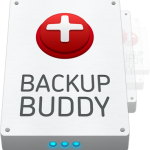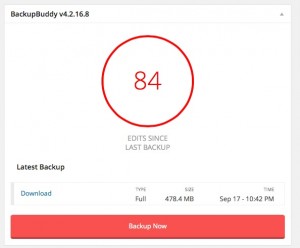 You know what a harrowing experience it can be when you’re poised to replace a client’s website with the new one you’ve been building. All this time the new site has been safely available in the background, all cool, no one the wiser. Replacing a site, with as little disruption to the live operation as possible can definitely get your heart racing, especially when the site you’re replacing is CMS-based like WordPress. From go, the clock is ticking.
You know what a harrowing experience it can be when you’re poised to replace a client’s website with the new one you’ve been building. All this time the new site has been safely available in the background, all cool, no one the wiser. Replacing a site, with as little disruption to the live operation as possible can definitely get your heart racing, especially when the site you’re replacing is CMS-based like WordPress. From go, the clock is ticking.
Just this morning I went through this process. I had a website whose original design was being completely changed. Obviously, as you know, you can always upload a new theme to a WordPress site and give it a new skin. However, some installations require a full replacement.
What’s the quickest way to replace the old site HTML, SQL and all? What’s the best way to copy your sandboxed site over, and get it running, including getting all the URL dependencies updated? How can you do all this without visitors seeing the whole messy unpacking and configuration process?
The answer my friends is BackupBuddy from iThemes.
You know the drill. The client has approved the new site. Now your job is to make that thing go live as fast as possible. You want to “flip the switch”. Turn off one site. Turn on the other. In the past, I’ve built out the entire site and then when I was ready, pointed the domain to that new site. What a terrible solution that was. There was so much clean up work to do with that method, I knew there had to be a better way.
Enter BackupBuddy. With BackupBuddy, the process is straight forward:
- The first thing you are going to want to do is install and run BackupBuddy on the old site. Assuming your original/legacy site is WordPress, you should have a full backup of the thing before you start this process. Store this file someplace safe.
- Install the BackupBuddy plugin into your new site’s WordPress.
- Follow the BackupBuddy instructions. Create a backup file of the new site. This creates a .zip file, and includes everything along with WordPress.
- Download the .zip backup file onto your hard drive. Don’t use Safari for this. Safari unpacks the .zip. You need to keep this file in .zip format. This can be a pretty large file. I’ve been averaging file sizes over 400 MB.
- Inside the WordPress admin of your new site, click BackupBuddy—> Restore / Migrate. Here you will see a screen of instructions. You will be prompted to download importbuddy.php.
- Download importbuddy.php. (The system requires that you enter a password. Make note of this password. Keep it simple. It’s only temporary.)
- Now FTP importbuddy.php and your backup .zip file to the directory on your host server where your OLD site lives.
- With both the importbuddy.php file and the backup .zip file uploaded to the home directory of your old site, navigate in your web browser to the location of the importbuddy.php file. (ie http://www.{yoururl.com}/importbuddy.php) where you replace {yoururl.com} with your live site URL.
- You should see the Backupbuddy page appear. You’ll be prompted to enter the password you used when you originally downloaded the importbuddy.php file. (if you don’t see this page appear, then you are not using the correct path to the file.)
- Now comes the real magic. The first time I did this, I needed a shot of scotch. Ok. Deep breath. Click the button.
- Follow the on-screen directions until the restore is complete. This is where you’re going to need those SQL database credentials handy. You will be prompted to enter and test those before the unpacking begins.
- During the unpacking process your old site will be replaced with a temporary note saying that the “Site is undergoing maintenance.” This is a great feature. So simple, yet when you do updates like this by hand a notice at the front door that things are being worked on can be tricky to set up. BackupBuddy automatically handles this for you.
- Once BackupBuddy finishes unpacking, I swear it’s like triggering a life raft in a closed space, you’ll be prompted to test things out. Take the freshly installed site out for a spin.
What you should have at the end of the Restore process is the fully functioning version of your new site, which has replaced the old site. All the URLs and dependencies on the new site have been updated with the proper URL. Check your Permalinks to make sure they are set properly, but for the most part, you should be up and running.
Of course, backing up your live sites is important too! If something should happen, then this same process can be used to restore your website. Once I got used to how things worked with the plugin, I dug it. Now, if we could only do a little Backupbuddy with our bodies!
BackupBudd is not free. But the money I’ve saved because I’m no longer wasting time, has been huge. Plus I look more pro to my clients in handling things like this. It took me all of 10 minutes to migrate the site this morning and there were no problems. You can check BackupBuddy out here: http://ithemes.com/purchase/backupbuddy/


September 19, 2014
No Comments
By Scott